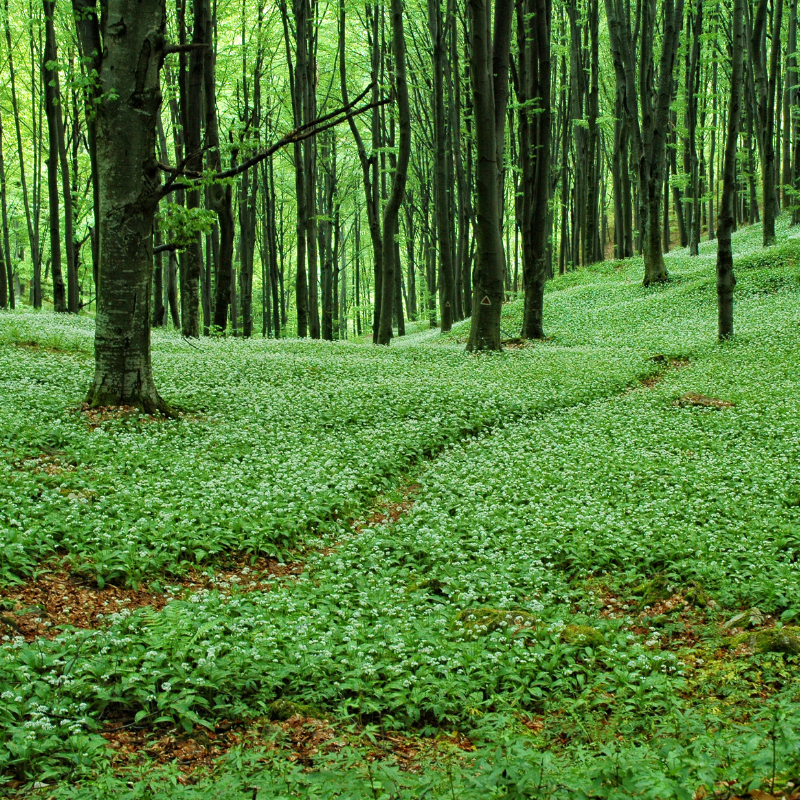Foraging for Wild Ramps!
- bethgehring

- May 9, 2019
- 2 min read

Finally! After late April snows, spring has sprung in Northeast Ohio. I’m dreaming about a hike in the woods with my gathering basket, foraging for the wild ramps that appear all over our forests in the spring!
Ramps are a seasonal potherb traditionally found from late March to mid-May depending upon where you live and climate change’s effects on their growing season. They grow in clusters with fleshy, vibrant green leaves and purple shoots that lead into a familiar-looking white bulb. If you don’t have time to harvest your own, wild ramps are often available at outdoor markets during their season.
Wild ramps taste like wild garlicky leeks and like all edible members of the allium family they’ve traditionally been used to support the health of the circulatory and immune systems. (Always consult your doctor if you are taking lithium, diabetes medications or anti-coagulants before eating wild onions because there can be contraindicative effects.)
I love to use ramps in soups and stews, and have even been known to eat one or two of them raw with fresh sweet butter and bit of French sea salt. To be fair I make my husband eat them too, so he won’t notice the aroma.
Adding one or two of to the juicer with kale, celery, golden beets and cucumber makes a delicious, refreshing and cleansing springtime tonic. Apple and ramp jam has a beautiful flavor and can be used as an accompaniment to hard cheeses or grilled meats. Raw ramps blended into butter with a bit of sage and thyme served with hot biscuits is truly ambrosial.
I cook and puree them with spring asparagus, young stinging nettles (another traditional spring tonic food), fresh lemon thyme, vegetable or chicken broth and buttermilk for a wonderful spring soup. I stuff a few ramp leaves under the skin of a roasting chicken or simply toss them in the stock pot when making a soup, stew or bone broth.
It’s a wonderful thing to happen upon a patch of wild ramps and a terrific excuse for a walk in the early spring forests but it’s always important to remember to harvest any wild plant sustainably.
Rules for Harvesting Wild Foods
Know what you are harvesting. Get a good guide book for your area, and, if possible go with someone who knows how to distinguish among similar looking plants. For example, although it’s not likely that you’d find them growing in the woods, Lily of the Valley leaves are similar to ramp leaves and very poisonous.Take a smaller amount than what you think you need.Gather your wild foods from several different spots.Have permission to gather on the land that you’re foraging.Leave dirt on the roots, and use a moist towel to wrap them. I use cloth dishtowels, because I paper towels are too absorbent for the delicate roots.Use a small hand cultivator. And, when choosing which plants to take, “ask” them. Plants that are ready to be picked simply slide out of the earth. If you get resistance, move on to the next one. There will always be some happy to go home and a gentle tug with a twist of the cultivator is all they need.








Comments